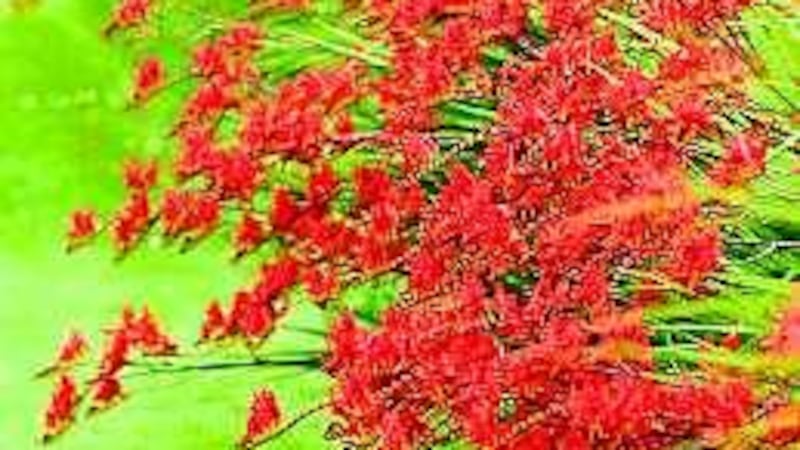For more than a century the temptation of monbretia has proved irresistible to Irish gardeners. However, John Manley thinks we should perhaps call time on this invasive weed
AN ETHICAL - or what we in the media glibly call an 'environmentally friendly' - approach to gardening has become increasingly popular in recent decades as people have become more aware of the impact their favourite pastime can have on the planet. Peat-free products, bird-friendly slug pellets and water harvesting are just some of ways sustainability is realised in the modern garden.
By adopting an ethical approach, whether it applies to gardening or other aspects of life, you seek to ensure your actions have no - or at least limited - negative consequences.
But sometimes we can breach our own code of ethics, deliberately and inadvertently. For example, in pursuit of a neat and clean gravel driveway, I recently deployed glyphosate in order to kill persistent clumps of grass that had rooted themselves in the soil beneath the gravel. This goes against my desire not to use weedkiller, as it has been shown to have a detrimental impact on organisms in the soil. I wouldn't use it anywhere near the edible garden, that's for sure.
But elsewhere, abiding by a code of ethics is less black and white.
Take crocosmia x crocosmiiflora, for example, the plant commonly known as monbretia, which most of you will be familiar with as it grows in abundance around Ireland, both in gardens - including my own - and in the wild.
This old favourite originated in southern Africa and is the product of artificial hybridising. Introduced to Europe in the late 19th century, crocosmia loves Ireland, as our moist, relatively mild climate isn't that far removed from its homeland. Therefore in the past 100 years or so, it has become widely naturalised in a variety of places and seems to particularly flourish close to the sea.
Montbretia spreads itself through rhizomes and corms, which are both durable and vigorous. In New Zealand, for example, it is regarded as a weed and is controlled by the sort of regulations we apply to plants such as ragweed and dockens.
This week my plan was to tell you about all the different varieties of crocosmia and how they'd contributed to the richness and variety of our gardens but should I really be extolling the virtues of plant that threatens our native flora and biodiversity?
Here's the case for and against: Crocosmia x crocosmiiflora is a useful plant for filling difficult spaces, such as in damp shade or close to a wall. It also looks good in full sun and it transplants so easily that people are constantly lifting the corms from friends' gardens and taking them home. September is traditionally the time to do this but I implore you - don't.
It may be pretty and low maintenance but it can also be a curse, invading vegetable beds and everywhere else it comes into contact with. Efforts to eradicate it more often than not prove fruitless as a new plant will sprout from the smallest piece and in a matter of years you'll have a clump - though you can always split it with friends, naturally.
If you insist on some crocosmia may I guide you towards the cultivars, which, as well as not being too invasive, will immediately set you apart from the commoners with bog-standard monbretia in their gardens.
The best known cultivar is C. 'Lucifer', which grows up to a meter and has vivid red flowers. 'George Davison' is named after the head gardener at Westwick Hall in Norwich, who bred 13 varieties of the plant. It boasts the monbretia's trademark upright, sword-like foliage but rather than red or orange, its flowers are yellow. Also yellow but bigger than 'George Davison' is 'Rowallane', a variety bred at the eponymous Co Down garden. With 'Golden Fleece' you'll get regal flowers while Crocosmia pottsii 'Culzean Pink' is always guaranteed to scream loudest in any border.


